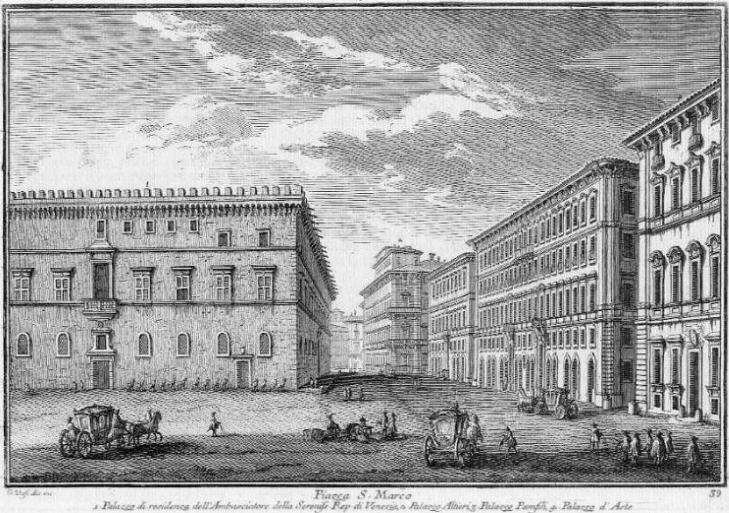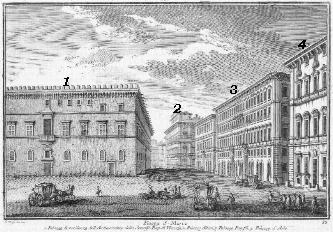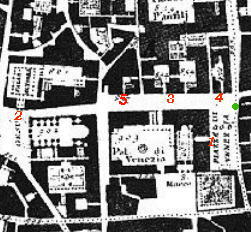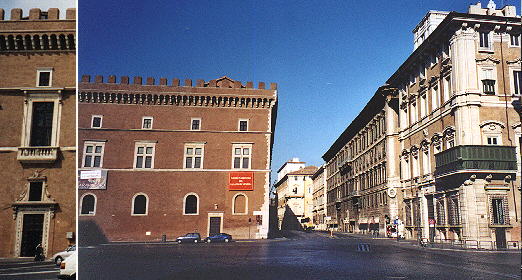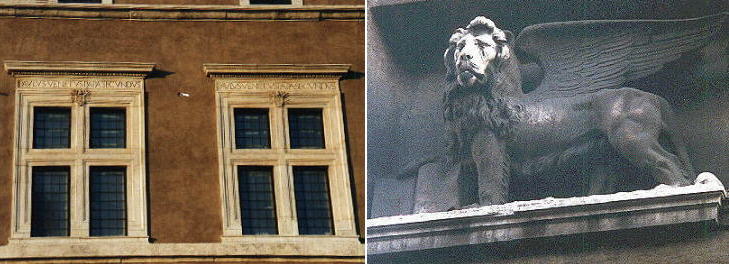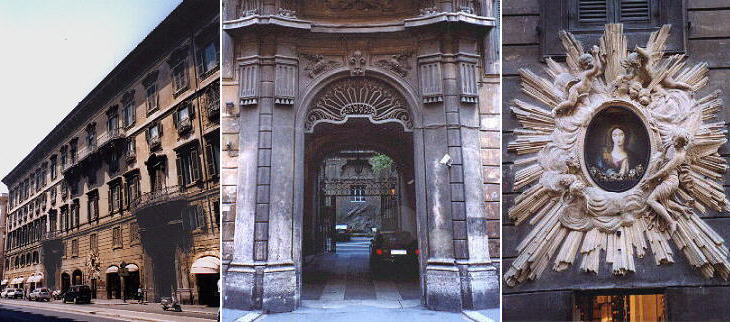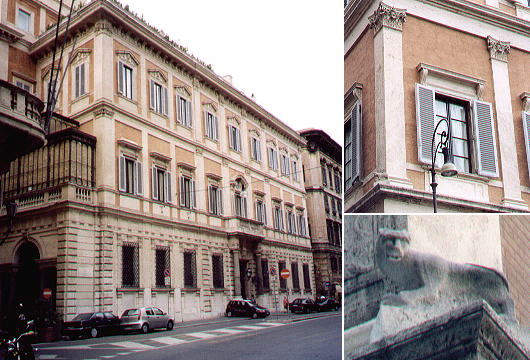  Piazza S. Marco (Book 2) (Map B3) (Day 1) (View C7) (Rione Pigna) In this page:
Piazza S. Marco is today Piazza Venezia, but S. Marco and Venice
were almost synonyms in the past. The view is towards Piazza del Gesù
and it shows the southern side of Palazzo Panfilio
and Palazzo Altieri. Other views of Piazza S.
Marco are in Book 4 (Palazzo di S. Marco) and
in Book 9 (Palazzo dell'Accademia di Francia). The view is taken from the green dot in the small 1748 map here
below. In the description below the plate Vasi made reference to:
1) Palazzo di S. Marco (with a reference to the fact it was the palace of the ambassador of Venice);
2) Palazzo Altieri; 3) Palazzo Panfilio; 4) Palazzo d'Aste.
2) and 4) are covered in other pages. The small map shows also 5) Palazzo Grazioli.
This part of Piazza Venezia looks unchanged but it's the only part which was not affected by the significant changes made for the erection of the Monument to King Victor Emmanuel II and for the opening of Via dei Fori Imperiali.
Palazzo Venezia was built in Florentine style by Cardinal Pietro Barbo from Venice
who became in 1464 Pope Paulus II. The architect is unknown. It
was used by the Popes until Pius IV presented it to the Republic of Venice.
It then became the Embassy of Venice and eventually the Embassy of the
Austrian-Hungarian Empire after Venice was annexed to that Empire. After
World War I the Palace was acquired by the Italian Government.
The southern side of Palazzo Doria Pamphylj was completed in 1743 by Paolo Amelj and it is one of the last additions to Baroque Rome. The palace has two other (more imposing) fašades: one next to S. Maria in Via Lata and another one opposite Collegio Romano. The Doria did not live on this side of the palace which was structured in flats for rent and this explains why the fašade is so crowded with windows and why there are not many flying doves.
Palazzo Grazioli was designed by Camillo Arcucci in 1650. It was rented a few years ago by Mr Silvio Berlusconi, the current
Presidente del Consiglio (Prime Minister) of the Italian Republic, who lives there when he is in Rome and sometimes holds political meetings in this building, rather than in
the official residence of the Prime Minister in Palazzo Chigi. Palazzo Grazioli is also known as Palazzo della Gatta (cat) because its rear
fašade has a little statue of a cat. The statue was found in a nearby Temple of Isis and most likely it represented a monkey.
Next plate in Book 2: Piazza
di Spagna
Go
to |
